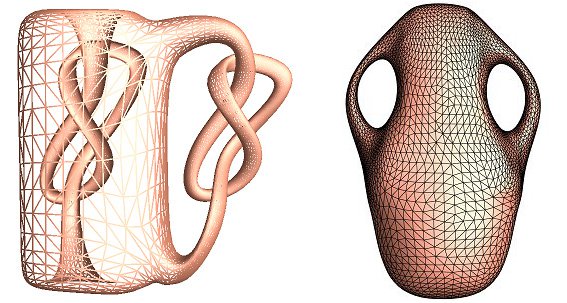From the results of the last post it is clear that a surface $M$ is topologically equivalent either to a sphere with exactly two oriented edges or to a surface with at least four oriented edges but only one face and only one vertex.
In the last case the number of oriented edges must be divisible by four (since the Euler characteristic is even). In fact this number must be four times the genus. From here one can procede (we will not show the details here) by clever applications of splitting, erasing and contraction to finally arrive at a normal form where the edges along the single face come in the following order:
$a_1, b_1, \rho(a_1), \rho(b_1),\ldots ,a_g, b_g, \rho(a_g), \rho(b_g)$
This “normal form” then yields the following
Theorem: Two discrete surfaces are topologically equivalent if and only if they have the same genus.
Here are some surfaces of genus up to two I found by Google image search::


